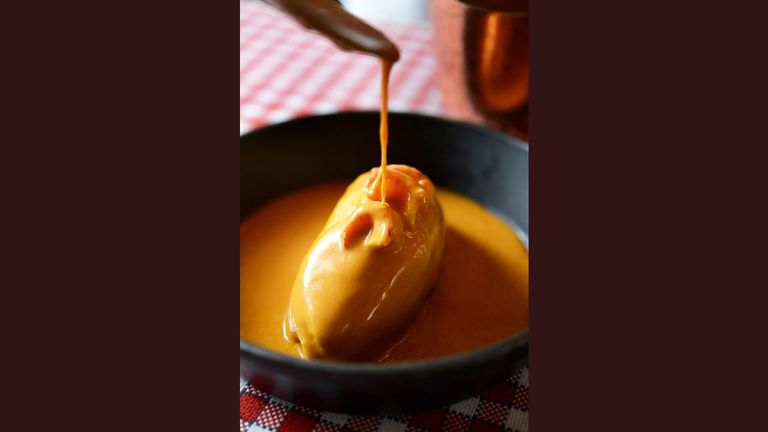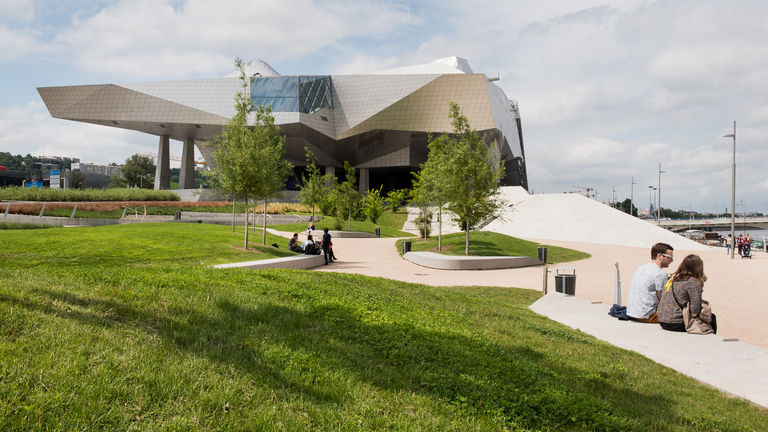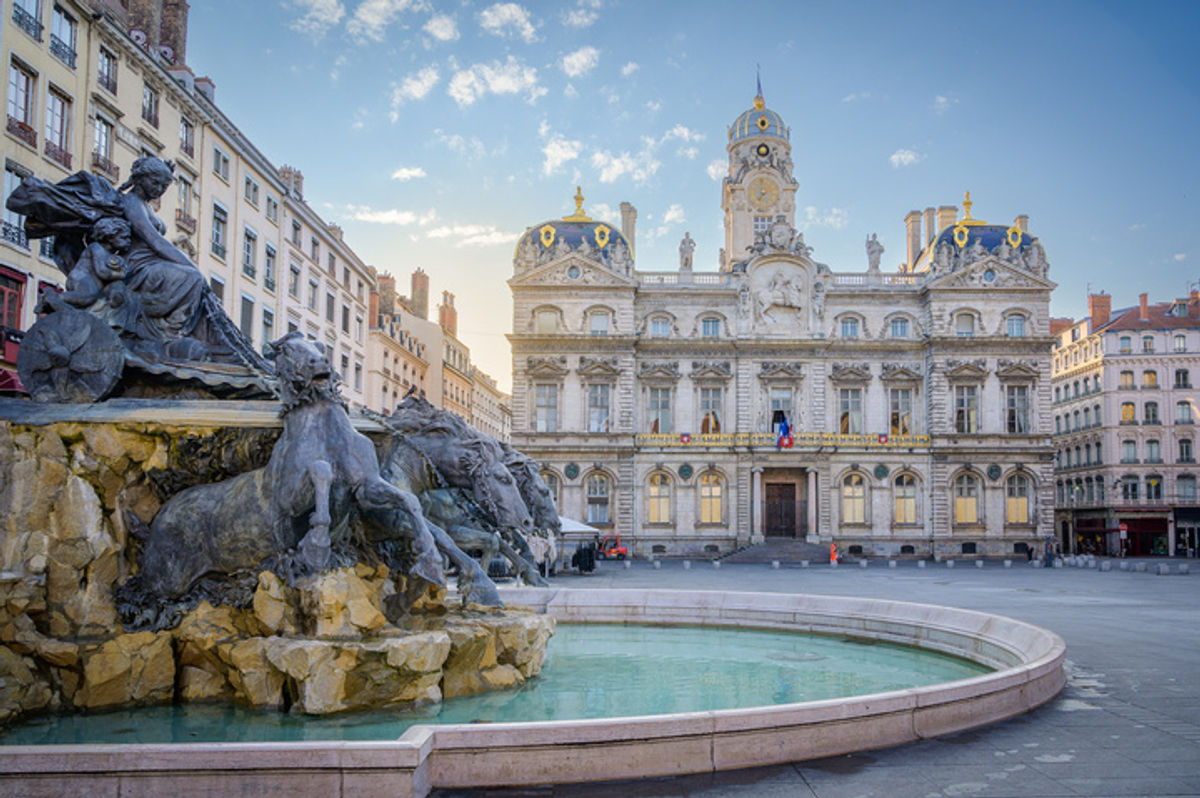As the capital city of France’s Auvergne-Rhone-Alpes region, Lyon is a city of layers and legacies. Much of the city comprises a UNESCO World Heritage Site, thanks to a storied history dating back to the first century B.C., when the Romans declared it the capital of the Three Gauls.
Situated where the Rhone and Saone rivers meet, Lyon continues to captivate visitors with its renowned gastronomic scene, impressive museums, medieval architecture and timeless charm. For an unforgettable introduction to Lyon, consider these six essential experiences.
Eat at an Authentic Lyonnaise Bouchon
Lyon is often heralded as the gastronomic capital of France, with nearly 20 Michelin-star restaurants and close to 25 certified bouchons. A bouchon is a traditional restaurant that can only be found in Lyon, and its exterior is marked with official signage from Les Bouchons Lyonnais, an organization dedicated to preserving the authenticity of these beloved establishments.
RELATED: 6 of the Best Restaurants in Lyon, France
Expect hearty dishes in a lively, laid-back atmosphere, with checkered tablecloths and jovial servers who take pride in the legacy of Lyon. Americans will feel at home with the portions here — bouchons originally catered to silk workers who craved a sizable, stick-to-your-bones meal after a long shift. Clients can try the very dishes they once savored, including quenelle (souffle made with fish), tripe soup, pate en croute (foie gras in a pastry crust) or a praline tart made with Lyon’s signature pink pralines.
 Lyon is often heralded as the gastronomic capital of France, with nearly 20 Michelin-star restaurants and close to 25 certified bouchons.
Lyon is often heralded as the gastronomic capital of France, with nearly 20 Michelin-star restaurants and close to 25 certified bouchons.
Credit: 2025 Lyon FranceHunt for Street Art and Traboules in Old Lyon
Head to Vieux-Lyon (Old Lyon) and nearby Croix-Rousse for medieval architecture, charming cobblestone streets and hidden traboules — secret passageways through buildings and picturesque courtyards that lead from one street to the next. Traboules came in handy during times of war and conflict, whereby savvy locals could evade the enemy and avoid capture.
Find striking inner courtyards that are postcard-worthy, such as La Tour Rose (the pink tower) and Cour des Voraces, named after a group of silk workers who led the Canut (silk worker) Revolt in the mid-1800s. In and around Cour des Voraces, visitors will find an impressive collection of street art — some political and jarring, such as the work of Big Ben — and others that will just make them chuckle, like Ripa’s quirky robots made from recycled goods. Street art has become so intertwined with the city that Lyon celebrates the art form each October with a dedicated festival, Peinture Fraiche (Fresh Paint).
Learn About Our Origins at Musee des Confluences
Located at the confluence of the Rhone and Saone rivers, Musee des Confluences is a marvel of stainless steel and glass by Austrian architect Wolf Dieter Prix. What clients encounter inside is equally as impressive, including 25,000-year-old hominids (reconstructed from their fossilized bones) and taxidermy representations of extinct animals such as the dodo and the Tasmanian wolf.
RELATED: What’s New in France
The museum’s crown jewel is the mammoth of Choulans, a towering woolly mammoth skeleton from the Ice Age (when Lyon was covered in Alpine glaciers). This fascinating history and anthropology museum is free for children and teens who are 18 years old and younger. Adult admission is $14.
 The Musee des Confluences features 25,000-year-old hominids and taxidermy representations of extinct animals such as the dodo and the Tasmanian wolf.
The Musee des Confluences features 25,000-year-old hominids and taxidermy representations of extinct animals such as the dodo and the Tasmanian wolf.
Credit: 2025 Musee des ConfluencesRide the Funicular to Fourviere Basilica
Built in 1872, the iconic Basilica of Notre-Dame de Fourviere is dedicated to the Virgin Mary and welcomes some 2.5 million visitors annually. Just a few of the highlights of this sacred site include a gilded altar that serves as the focal point of the basilica, a series of six exquisite mosaics depicting historic moments in Christianity, the crypt of Saint Joseph and panoramic city views atop Fourviere Hill.
To get there, suggest only your sportiest of clients climb the 800 stairs from the foot of the hill. For everyone else, La Fourviere Funicular is the better option for scaling the hill and offers lovely views along the way (it’s also wheelchair accessible). It takes about two minutes to reach the top via funicular, and clients can always opt for a relatively easy stroll downhill should the urge strike them.
Celebrate the Birth of Cinema at Musee Lumiere
Dedicated to the Lumiere family and their contributions to the world of cinema, Musee Lumiere is a small but worthwhile museum in the Monplaisir district of Lyon. Here, guests will find the world’s first cinematograph and learn about how brothers Auguste and Louis Lumiere brought their inventions to life.
RELATED: A Travel Guide to Corsica, France
Guided tours in English are available for approximately $15 when booked in advance (and an audio guide in English is available), and visitors have the opportunity to roam the very villa where the family once lived.
Sample Sweets and Cheese at Halles de Lyon Paul Bocuse
Visitors strapped for time but who want to immerse themselves in Lyonnaise cuisine should prioritize Halles de Lyon Paul Bocuse, a vibrant indoor food hall with some 60 restaurants and producers. Named after Lyon’s own chef Paul Bocuse, who is largely credited for placing French cuisine on the map, the food hall is open for business Monday through Sundays and is best visited outside popular lunch hours (11 a.m. to 2 p.m).
To eat like the locals do, indulge in frog legs, order rosette sausage, taste coussin de Lyon (a marzipan and chocolate dessert) or sample creamy Saint-Marcellin cheese that will put clients’ favorite brie cheese to shame. Seafood lovers will not want to miss Chez Antonin for seasonal fish (cooked whole), king crab and fresh oysters by the dozen.
